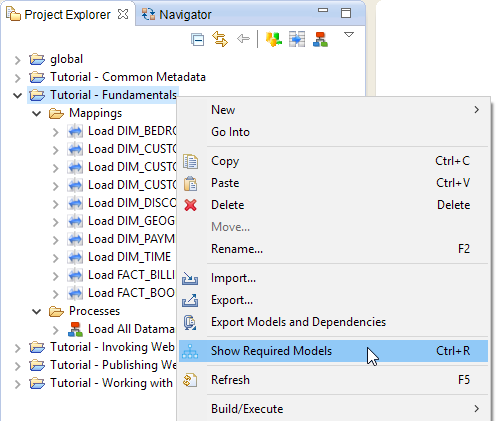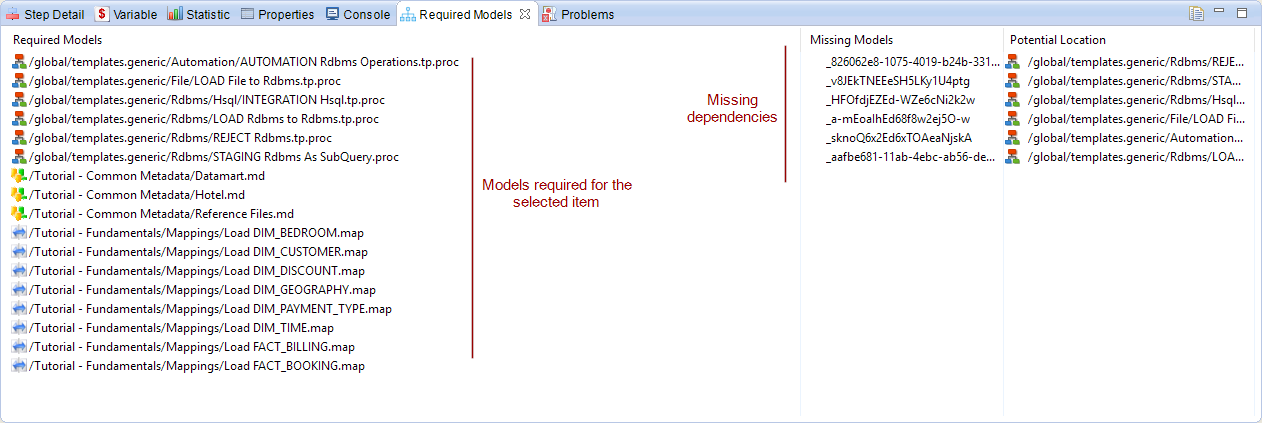When working on Projects, all the Metadata, Mappings, Processes and Templates might not be located at the same place.
Most of the time, users choose to structure developments in multiple projects, centralize all Metadata, etc.
This means that a Mapping, for instance, might depend on multiple Projects to work correctly.
The Designer offers the possibility, for a given item (Project, Folder, Mapping, ...) to list all its required dependencies, and the missing ones.
This can help users to find what is required, what is missing, and the potential place where it can be found.
Prerequisites:
- Stambia DI Designer S19.0.7 or higher
Project Explorer
To display this list of dependencies, simply right click on an item in the Project Explorer, and choose 'Show Required Models'.
You can do this on anything in the Project Explorer (Project, folder, Metadata, ...).

This will open the following View in the Designer:

In this example, we did the dependency check in a workspace where the generic templates were not imported, so they are marked as missing here.
As explained on the screenshot, the left part lists the dependencies required for the selection. We can here see the Mappings, Metadata, and templates for instance.
And on the right part, the list of Models that are missing and the potential location where it could be found.
Note that the location is only a helper that can help the user to find in which project the missing dependency could be.
This is calculated based on the path information that is found in the Mappings, Metadata, ... but this might not reflect the real location.
This should be used only as a hint that might help to have an idea where to look for.


